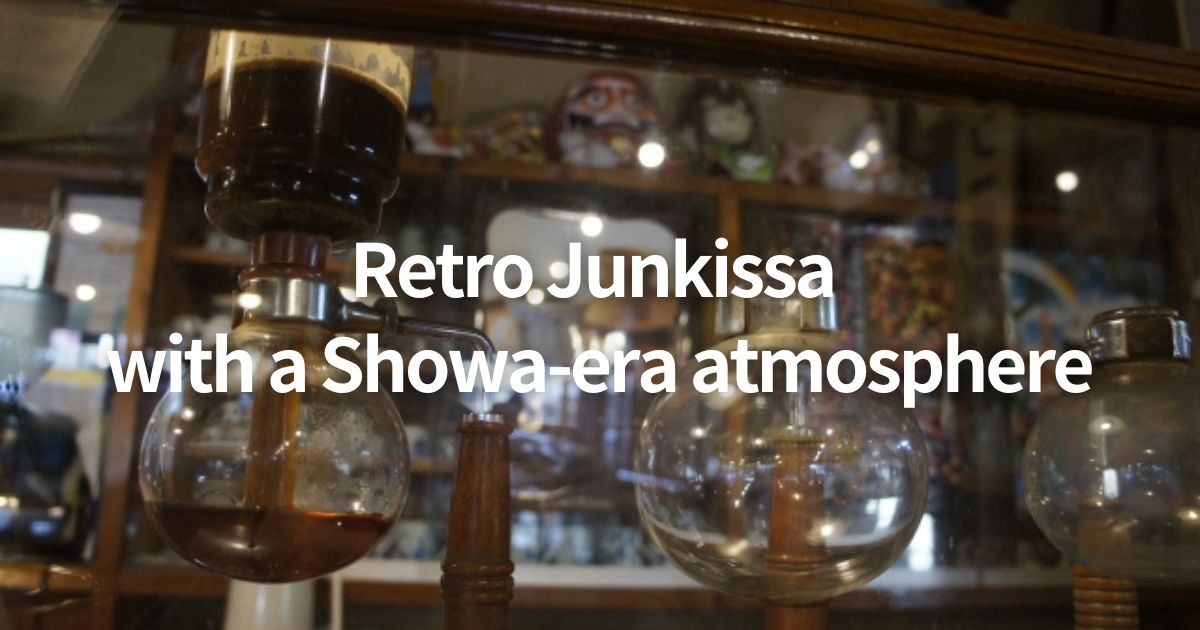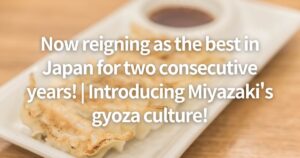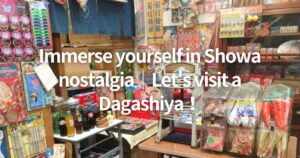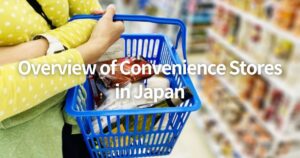Because of the wide variety of Japanese snacks, the use of natural ingredients, and strict quality control, they are Items and spaces with a Showa-era atmosphere have become a bit popular among the younger generation in Japan.
I, for one, find myself more excited to visit a retro Junkissa than a modern Starbucks-like cafe.
This phenomenon is not limited to Japan, and nowadays, more and more people from overseas are interested in the atmosphere, decorated items, music, and menu served at Junkissas.
I have heard that there are even some people who enjoy visiting Junkissa when they come to Japan.
In this article, I will explain the outline of Junkissa, its appealing points, popular Junkissa, and how to enjoy them, including my own experiences.
I hope you will be interested in the charm of Junkissa.
What is “Junkissa” in the first place?


Junkissa refers to “pure coffee shops” that appeared in the Showa period and developed as places to enjoy coffee and light meals without serving alcohol.
The word “jun” means “unmixed,” and the concept was born in the coffee shop culture of the Taisho and early Showa eras to distinguish itself from stores that offered excessive service or alcohol.
Today, they are characterized by a Showa-era retro atmosphere and vintage feel, and are popular among foreign tourists and young people.
How are they different from the cafes on the street?
The differences between a Junkissa and a modern café (e.g. Starbucks) are as follows:
- Atmosphere: Junkissa is characterized by Showa-era retro decor and furniture that evokes a sense of nostalgia. On the other hand, cafes tend to be modern and sophisticated in design, offering a fashionable space for young people.
- Menu: Junkissa offers light meals such as Neapolitan and omelette rice, and alcohol is generally not served. Cafes offer a wide range of food and beverages, including alcohol.
- Type of business: A Junkissa has a “coffee shop business license” and can only serve simple hot food, while a café has a “restaurant business license” and can offer more sophisticated food preparation and service.
These differences make Junkissa attractive to foreigners visiting Japan as a place to experience nostalgic Japanese culture.
Three attractions of Junkissas
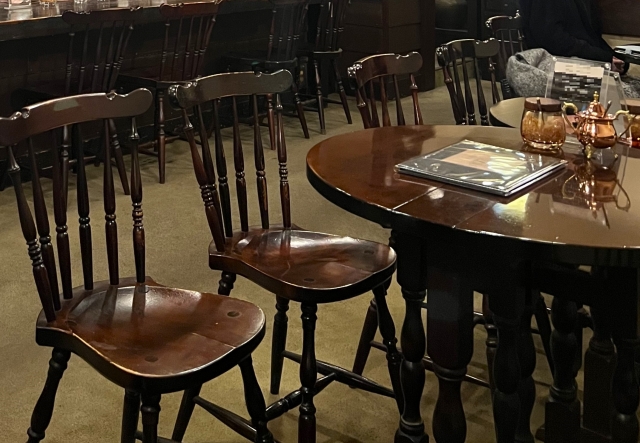

I have summarized some of the attractions of Junkissas that I find appealing.
Showa-era retro atmosphere
Dagashi (candy bars) embody the “dagashiya” culture of the Showa era and convey the original landscape of the Japanese people.
The greatest appeal of Junkissa is that you can immerse yourself in the retro atmosphere of the Showa period.
The interior decorations, including wooden furniture, stained glass windows, and antique clocks, are the result of the founder’s persistence in creating a luxurious space that is difficult to reproduce in the modern age.
These decorations and designs have a unique warmth that cannot be experienced at chain restaurants, and many people feel as if they are in a movie.
This nostalgic space is also fresh and appealing to foreign tourists who want to experience Japanese culture.
Richly unique menu
At Junkissa, you can enjoy traditional snacks and drinks such as Neapolitan and cream soda.
These are “coffee shop gourmet” foods that have evolved uniquely in Japan, and are characterized by a nostalgic flavor.
In addition, each store has its own original menu, so there is something new to discover each time you visit.
In particular, the bright appearance of cream soda looks great on SNS and is popular among foreign tourists.
Interaction with the owner and regular customers
One of the main attractions of Junkissa is the warm interaction with the owners and regular customers.
In a store that has been loved for many years, the owner himself has created a unique atmosphere that makes visitors feel at home.
This kind of humanistic customer service and communication is a special experience that cannot be found at large chain stores.
They also provide an opportunity for visitors to learn about the culture and history unique to the area, and are highly valued as places where they can experience Japanese hospitality.
I believe that the nostalgic retro Showa-era atmosphere will resonate not only with Japanese but also with people from overseas.
Recommendation of Junkissas
Here are some of the popular Junkissas and my recommendations.
Near Tokyo
Other areas
Near Tokyo
Coffee Ojo
✅ Recommended Points
- Founded in 1975, this Junkissa is located in Ueno.
- It offers a wide variety of menu items such as cream soda, Neapolitan, etc. The egg sandwich with omelette in between is especially excellent.
- The retro space with a touch of Showa-era coffee shop culture is a fresh experience for foreign tourists.
Kayaba Coffee
✅ Recommended Points
- A Junkissa in Yanaka established in 1938.
- Once closed, it was reopened at the request of local residents.
- Its specialties are “Lucian,” a mixture of coffee and cocoa, and egg sandwiches.
- It is popular as a tourist attraction because of its retro Showa-era atmosphere and warm, locally-oriented service.
Cafe Shinkai
✅ Recommended Points
- This unique coffee shop is located inside the public bath “Jujo Yu”.
- Nostalgic menu items such as cream soda served in goldfish bowl style glasses and “Onna-no Pudding” are popular.
- The nostalgic space has attracted attention as a spot where one can enjoy an extraordinary experience.
The collaboration of a “sento” (public bathhouse) and a “Junkissa” (pure coffee shop), which is something unique to Japan, is quite a rare and interesting spot.
Other areas
JUWELRY


✅ Recommended Points
- Located in Tennoji-ku, Osaka, this Junkissa is characterized by its cozy and quiet atmosphere.
- It offers a full breakfast and light meal menu, and is known for its particularly high quality coffee.
- The at-home atmosphere is friendly to foreign tourists.
Junkissa Swan
Japanese reading of cod (raw material) and onomatopoeia “taratara”.
✅ Recommended Points
- This large Junkissa in Abeno Ward, Osaka, is characterized by its vaulted ceilings and bright space.
- Its light meal menu, including waffles, is popular, and its many seats make it an easy spot for groups.
- Its unique atmosphere is also attractive to foreigners.
Arabiya Coffee Shop


✅ Recommended Points
- Located in Namba, Osaka, this historic Junkissa offers simple but flavorful coffee.
- Although closed irregularly, this store is loved by locals and is easily accessible from sightseeing spots, allowing you to enjoy the retro Showa-era atmosphere.
Being in a space with Showa-era items and atmosphere makes me wonder if this is what it feels like to slip back in time…it’s a strange feeling.
Column: Showa-uta as background music is also attractive!
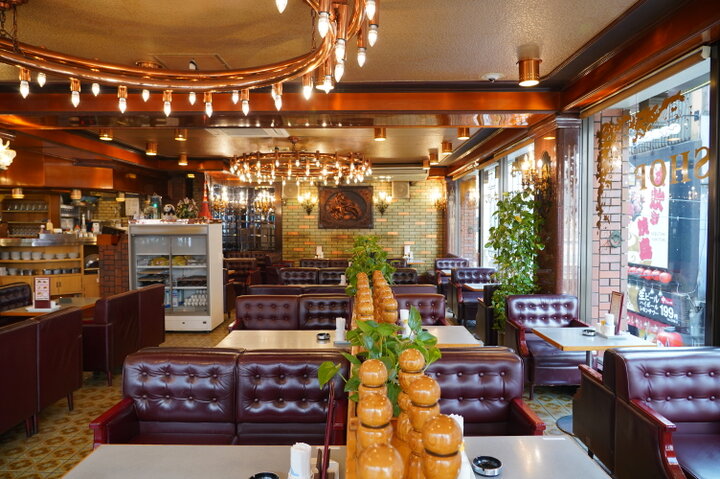

Showa-uta, or Showa-uta songs, are becoming as popular around the world as Junkissa, or pure coffee shops.
Here are some precious spots where you can see the collaboration of these two.
Be sure to check them out when you are in the neighborhood!
Three ways to enjoy Junkissas for foreign visitors to Japan


To enjoy Junkissa to its fullest, try these tips:
✅ Enjoy observing the space design
The interior of a Junkissa is an “artistic space” in which the owner’s aesthetic sense is concentrated.
Wooden furnishings, stained glass, seasonal decorations, and other details reflect this attention to detail.
For example, in Koiwa’s “Ki no Mi,” artificial flowers are used to recreate cherry blossoms and autumn leaves, and the view changes depending on the seat.
For visitors to Japan, we recommend the enjoyment of reading the story of the owner while imagining “why this design” from a bird’s eye view of the entire space.
✅ Listen to music and history
Another feature of this store is that you can taste the owner’s taste in records and background music.
At Coffee Shop Rai in Kuramae, the store is filled with the voices of female jazz singers such as Billie Holiday, and the ceiling is covered with paintings by the designers involved in the Asakusa Samba Carnival.
Visitors can deepen their unique cultural experience in Japan while thinking about the historical background of the music and the historical items in the store.
✅ Explore interactions with the owner and regular customers
Junkissa is a place where you can feel a “human connection.
When it is not crowded, you can ask the master for trivia about coffee, or learn about hidden local spots from regular customers.
For example, hearing behind-the-scenes stories such as “this menu item is popular among the regulars” provides a valuable opportunity to get in touch with the local lifestyle and culture.
You will experience the essence of Japanese “Omotenashi” (hospitality) through conversation at a Junkissa.
You can easily enjoy the taste of Junkissa at home!
You can also purchase items on Amazon that give you the feel of a Japanese Junkissa (traditional Japanese coffee shop).
I love the atmosphere of a Junkissa, so when I find an item on Amazon that interests me, I tend to check it out.
In this article, I would like to introduce you to some items that I recommend that you can purchase on Amazon that will give you that JUNKISSA-tea experience at home.
I hope you will find them useful in selecting items for your tea time.
If you are interested, check out the following products on Amazon!






Retro and stylish tableware will surely raise your spirits!

